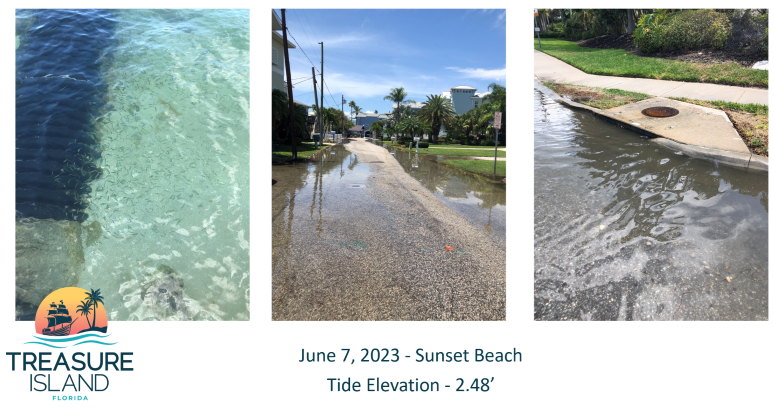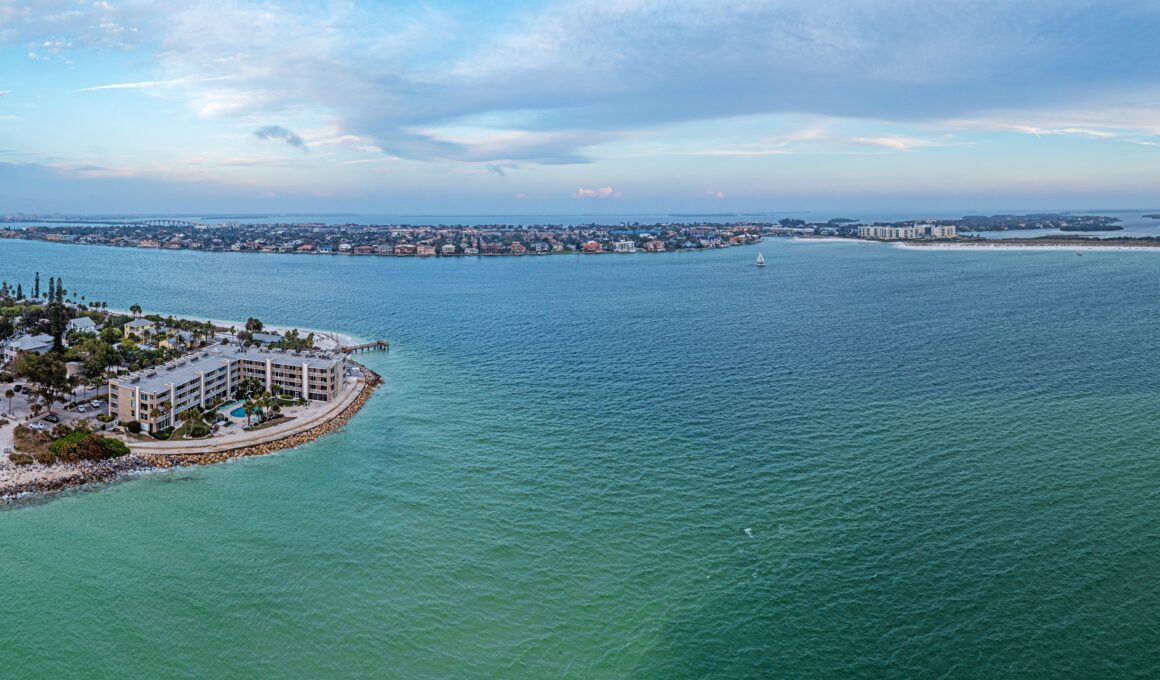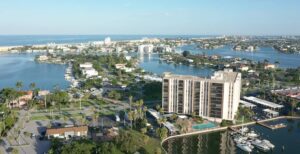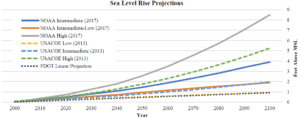After decades of a “no fill” policy, the City of Treasure Island has proposed significant changes to regulations that would help address sea level rise. Not only will the proposed regulations allow fill but, as currently drafted, they will require it when a home or business is substantially remodeled or rebuilt after a hurricane.
The goal, said Justin Keller, president of Advanced Engineering and Design and the City’s consultant, is to raise most of the barrier island by three to five feet by the year 2100. When homes are elevated, the city will raise roads to eliminate “sunny day flooding” that already poses problems to the extent that police are prepared to post “no wake” signage to minimize flooding on some parts of the island.
Working on a 2100 timeline with NOAA sea level rise projections ranging from about two feet to more than eight feet, the five-square-mile island is at the forefront of protecting homeowners from rising seas. Island officials say they considered four options:
- Do nothing, which would only push the problem down the road until it became an emergency rather than a planned initiative
- Managed retreat, which wouldn’t be possible on the tiny island where there is nowhere high to move
- Relying solely on stormwater pump stations which are costly to install, have high maintenance requirements and are often unreliable in storms
- Elevating the island’s terrain by allowing individual property owners to bring in fill.
“Now is the time to plan,” said Stacy Boyles, Director of the Treasure Island Public Works Department. “It will be a slow process over multiple City administrations. Now is our opportunity to plan for sea level rise, not make a last-minute plea for help.”
Prioritizing flood rating, neighborhood impacts
Major considerations included maintaining the island’s National Flood Insurance Program rating, which helps to keep flood insurance as affordable as possible, and ensuring that raising the terrain for one home would not adversely affect nearby homes. The proposed terrain modification manual would examine each property individually and, if necessary, require swales or walls to contain stormwater so it wouldn’t flow onto lower land.
Treasure Island already ensures that structures comply with the FEMA 50% rule, which requires property owners to elevate their homes when renovations exceed 50% of market value. said Keller. Under the proposed Elevate TI program, compliance would require that property owners raise the terrain as well, and proposesa new substantial improvements threshold.
Allowing fill will be very site-specific for each property. “There’s a misconception that we will allow mountains of fill and that the raised house will drain onto its neighbors,” Boyles said. “We will not allow that to happen. You will be able to see the differences, but they won’t be much more extreme than they appear today when a new house is built next to an older, lower one.”
Raising individual lots is necessary before roads can be elevated, Keller said. “In most cases, we won’t be able to elevate the roads until the majority of homes on that road are elevated,” he said. “If a small number of owners chose not to renovate and elevate, it is possible that when raising roads, their properties can be protected with site-specific engineering that may include pumps, but it wouldn’t be feasible to protect the majority of properties in that manner due to the expense.”

A recent survey shows that:
- 73% of respondents agree or strongly agree that sea level rise is a serious problem affecting the long-term quality of life for those who live and work in Treasure Island
- 78% of respondents agree or strongly agree that the city should take action to address sea level rise
- 84% of respondents agree or strongly agree that changes to how residents and businesses construct buildings, roads, seawalls and other infrastructure are necessary to address sea level rise in Treasure Island
“Our goal is to ensure continued roadway access throughout our community by using fill material to elevate buildings, roads, properties and infrastructure higher than where we expect sea level rise to impact us from now through the year 2100,” Boyles said. “Doing so will allow us to continue relying on a gravity-based stormwater drainage system, instead of pumps alone. Without changes to the way we build, daily high tides will eventually make roads impassable and prevent access to properties. If we wait to require terrain modification, it will be too late and too costly to avoid these impacts.”


